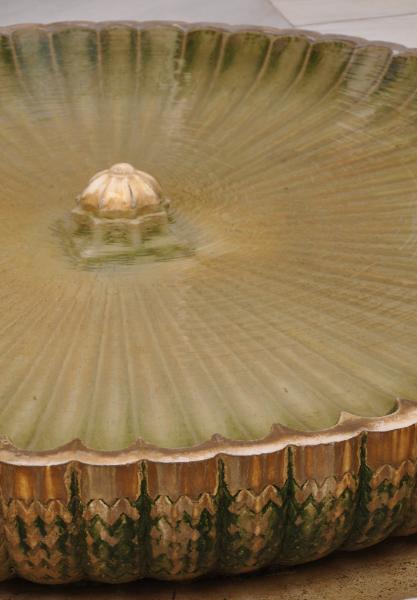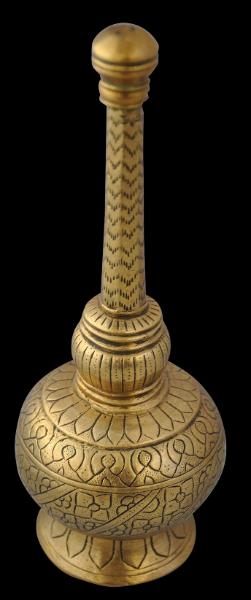
Straits Chinese Table Top Screen
Engraved Brass Rosewater Sprinkler
Northern India
18th-19th century
height: 19cm, weight: 318g
This small, elegant brass rosewater sprinkler of typical shape is from northern India. Importantly, it is engraved with motifs that are in keeping with the engraving often found on north Indian and Mughal ewers of the period.
The chevron patterns on the neck convey a sense of flowing water, this being a typical pattern found on spouts, necks and sometimes even handles of north Indian eighteenth century ewers. It is a pattern that often can be found across the Islamic world, particularly in architectural elements associated with water flow.
The top of the spherical body and the flared foot are engraved with borders of lotus petals in keeping with the sprinklers Indian origins. The body itself is further engraved with Islamic floral and geometric motifs. The use of lotus motifs is also evocative of water and life.
Rosewater sprinklers were used in India by most groups – Muslims, Hindus, Parsis, and so on. Muslims particularly used them in the home offering them to guests as they arrived so they might refresh themselves after their journey. Most groups used rosewater sprinklers as part of the wedding ritual.
The sprinkler is in fine condition and is without significant dents or repairs. It has a fine, soft, buttery patina.
References
Thomas, D.,’The carnation ewer – an example of Ottoman influence on North Indian ewers’, unpublished paper, 2011.
Zebrowski, M.,
Gold, Silver & Bronze from Mughal India, Alexandria Press, 1997.
Provenance
UK art market
Inventory no.: 1657
SOLD

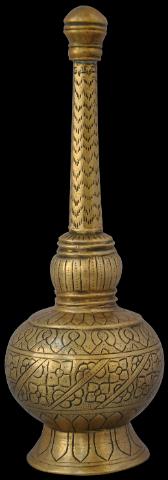
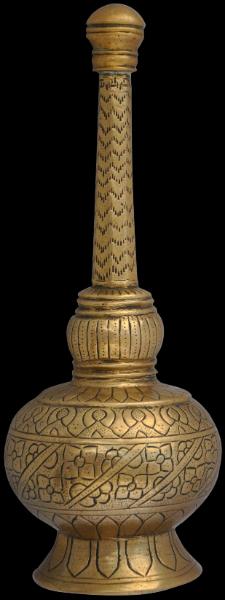
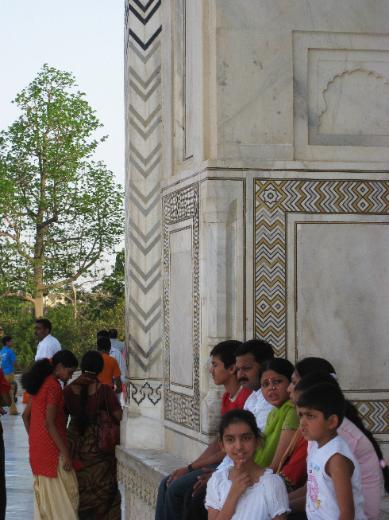
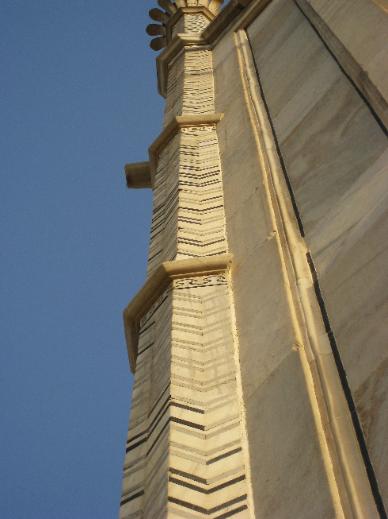
Water or perhaps snake skin motifs in marble on the Taj Mahal, Agra, India.
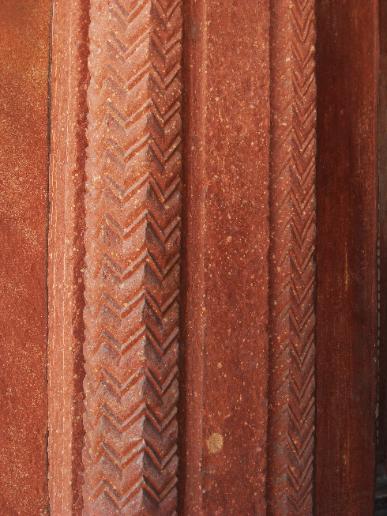
Detail on a column at Fatehpur Sakti, the Mughal capial founded in 1571 and which predates Delhi.
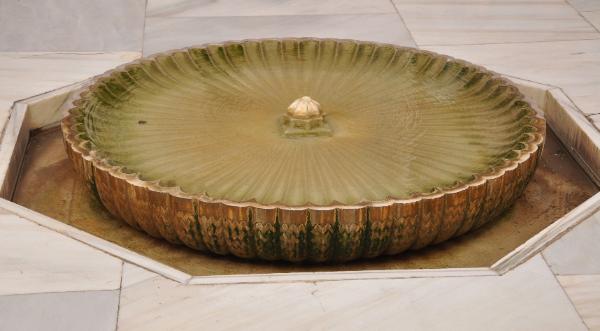
The underside of the central basin of this marble fountain in a courtyard of the ninth century and later Nasrid Palaces, Granada, Andalucian Spain, shows a similar repeated zig-zag water flow motif. (Photographed in October 2011.)
